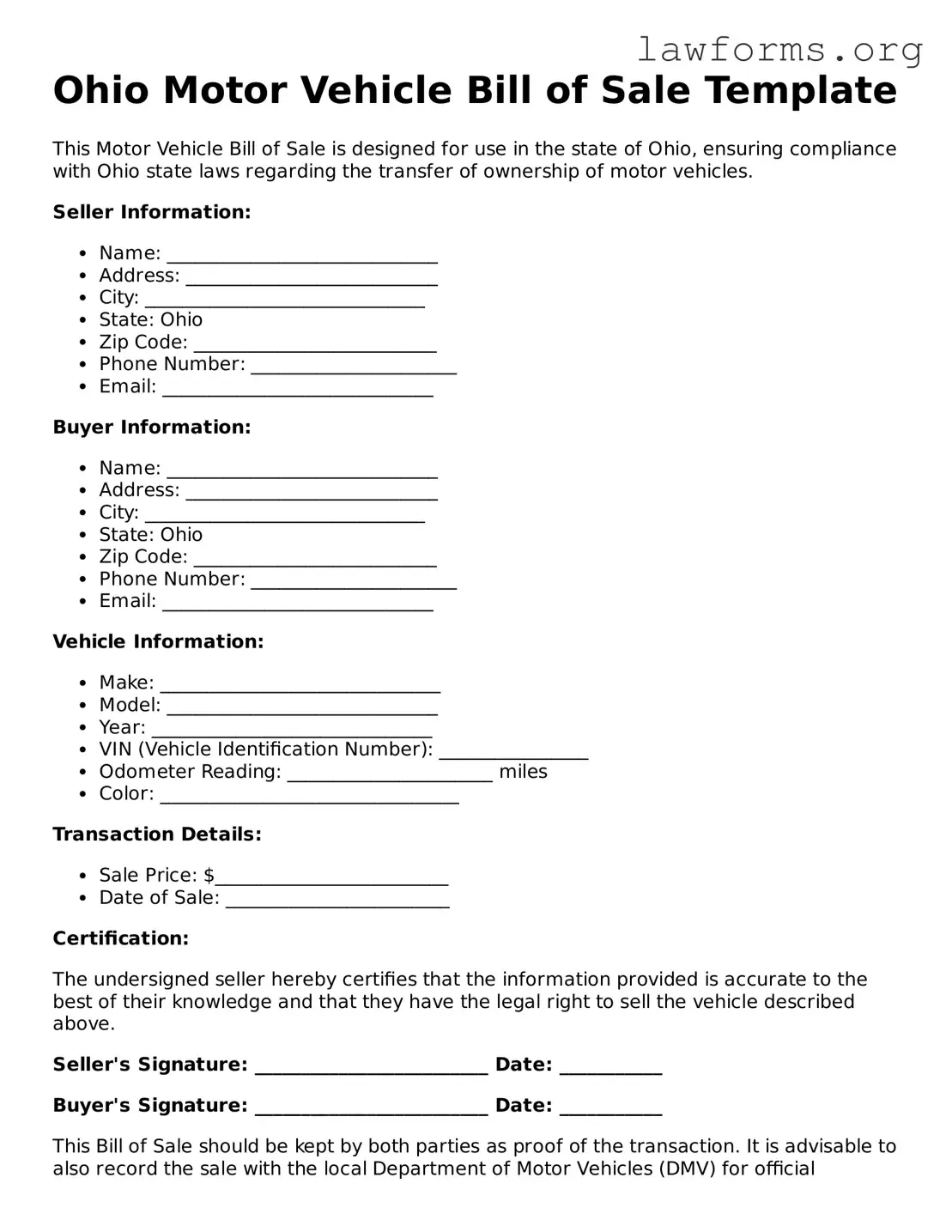Ohio Motor Vehicle Bill of Sale Template
This Motor Vehicle Bill of Sale is designed for use in the state of Ohio, ensuring compliance with Ohio state laws regarding the transfer of ownership of motor vehicles.
Seller Information:
- Name: _____________________________
- Address: ___________________________
- City: ______________________________
- State: Ohio
- Zip Code: __________________________
- Phone Number: ______________________
- Email: _____________________________
Buyer Information:
- Name: _____________________________
- Address: ___________________________
- City: ______________________________
- State: Ohio
- Zip Code: __________________________
- Phone Number: ______________________
- Email: _____________________________
Vehicle Information:
- Make: ______________________________
- Model: _____________________________
- Year: ______________________________
- VIN (Vehicle Identification Number): ________________
- Odometer Reading: ______________________ miles
- Color: ________________________________
Transaction Details:
- Sale Price: $_________________________
- Date of Sale: ________________________
Certification:
The undersigned seller hereby certifies that the information provided is accurate to the best of their knowledge and that they have the legal right to sell the vehicle described above.
Seller's Signature: _________________________ Date: ___________
Buyer's Signature: _________________________ Date: ___________
This Bill of Sale should be kept by both parties as proof of the transaction. It is advisable to also record the sale with the local Department of Motor Vehicles (DMV) for official purposes.
